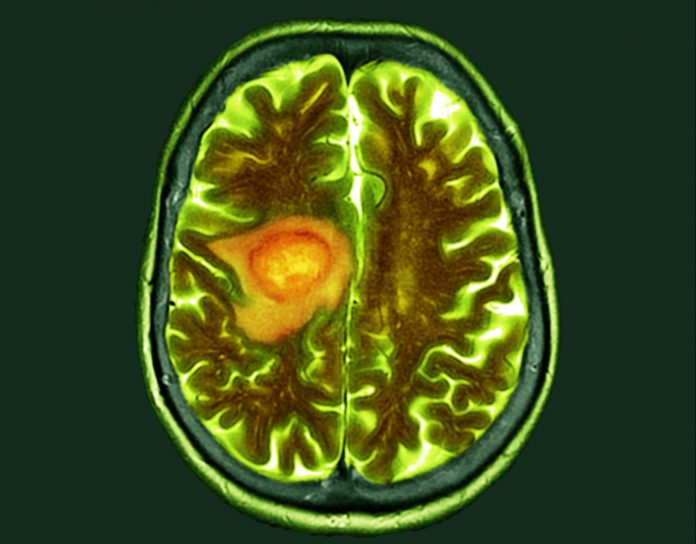
Nanoparticles, or tiny molecules that can deliver a payload of drug treatments and other agents, have been studied as cancer treatments for years. In one of the latest advances, researchers from the University of Chicago have developed a new type of nanoparticle that appears to be preferentially absorbed by tumor cells. The researchers proved that they could pack an extra punch by loading the nanoparticle with a bacteria-derived compound that targets a potent immune system pathway, called STING (Stimulator of Interferon Genes). When delivered systemically in mice, the STING-agonist laden nanoparticles effectively killed immunologically cold pancreatic and glioblastoma tumor cells. Their results were published in a paper in Nature Nanotechnology.
“One of the highlights of this paper is that we found a way to deliver a STING agonist as a systemic treatment as opposed to local injection,” said co-senior author Ralph Weichselbaum, MD, the Daniel K. Ludwig Distinguished Service Professor and Chair of Radiation and Cellular Oncology at UChicago. The tumor cells preferentially take up the nanoparticle where it accumulates in the tumor disrupting the tumor vasculature and stimulating an immune response. Previous iterations of STING agonists have been limited due to poor tumor-targeting, the necessity for delivering as a local injectable, and unwanted toxicity following systemic delivery.
In 2014, Weichselbaum and colleagues discovered that mice lacking the STING pathway did not mount an immune response to cancer in the presence of immunotherapy or radiation. For this reason, interest in developing STING agonists has been building. “The idea was to provide an activator of innate immunity that could be translated into antitumor effects and presumably help adaptive immunity,” Weichselbaum explained. “The long and short of it is that the STING pathway makes cytokines, including interferon, and helps the body fight off infection and cancer.”
The other half of the equation was developing a new type of nanoparticle to deliver the STING agonist. This effort, led by Wenbin Lin, PhD at UChicago, resulted in the team creating a nanoparticle based on nanoscale coordination polymers (NCPs) that have a non-toxic zinc phosphate core surrounded by lipid layers. These NCPs have the advantage that they can be engineered for controlled release, further increasing drug deposition in tumors.
In this paper, the team evaluated their new compound, a ZnCDA nanoparticle formed by the encapsulation of bacterial-derived cyclic dimeric adenosine monophosphate (CDA) in NCPs. CDA is a bit of DNA that bacteria generate when they invade a host. Its sudden appearance—whether by infection or dropped off by a nanoparticle—triggers the STING pathway and the host’s innate immune response to fight the cancer.
“This is a different kind of nanoparticle than you normally hear about delivering chemotherapy,” Lin explained. It is a nanoparticle innate immune modulator that targets the STING pathway designed to activate the innate immune microenvironment in the tumor that will in turn trigger the activation of the adaptive immune system.
“To me, the most important discovery of this research is that this nanoparticle self-targets tumors because it disrupts endothelial cells,” said Lin, making the tumors more permeable to nanoparticle accumulation. “It can deliver more drug into the tumor because of the self- targeting, and you get a very robust concentration of zinc-CDA in the tumor microenvironment.”
The team observed that a boosted immune response attacked the tumors in multiple ways, suppressing tumor growth and preventing metastasis in several types of cancers. It disrupted endothelial cells in the blood vessels of tumors, further increasing the deposition of CDA in tumors. Surprisingly, it also enhanced the ability of tumor-associated macrophages that had infiltrated tumors to present antigens that mark them for attack by anti-tumor T-cells.
Their studies also showed that the ZnCDA nanoparticle had robust anti-tumor effects by itself but when combined with radiation it appears to have an important radiosensitizing effect. “In glioma and pancreatic tumor models—cancers that are largely considered intractable to radiation—the nanoparticle made them more susceptible to radiation and immunotherapy treatments,” said Weichselbaum. In short, ZnCDA reinvigorated the anti-tumor activity of both radiotherapy and immune checkpoint inhibitors in immunologically ‘cold’ pancreatic and glioma tumor models, offering a potentially promising combination strategy for these and other difficult to treat human cancers.
Looking forward, the team intends to study the approach in more models with radiation. Weichselbaum suggests trying it with a variety of immune checkpoint inhibitors, with radiotherapy, with chemotherapy, or even as a single agent.
“This type of nanoparticle is designed to further enhance the great success of immunotherapy we already have seen for some tumors,” adds Lin, conceding that for the majority of tumor types current immunotherapy is inadequate. “The field is really looking for other things that will enhance current immunotherapy and this is designed to do that.”













